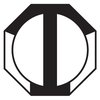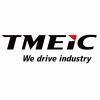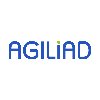
i
Difacto Robotics and
Automation
Filter interviews by
Difacto Robotics and Automation Interview Questions and Answers
7 Interview questions
A nut is a fastener with a threaded hole, while a bolt is a threaded fastener with a head.
A nut is usually smaller than a bolt.
A bolt is inserted through a hole and tightened with a nut.
Bolts can have different types of heads, such as hexagonal or round.
Nuts can have different shapes, such as hexagonal or square.
Bolts are used to hold two or more objects together, while nuts are used to secure the bolt in place.
Ex...
1st and 3rd angle projection are two methods of representing a 3D object on a 2D plane in engineering drawings.
1st angle projection is commonly used in Europe and Asia, while 3rd angle projection is commonly used in North America.
In 1st angle projection, the object is imagined to be in between the viewer and the plane of projection, while in 3rd angle projection, the object is imagined to be behind the plane of pr...
Force is a physical quantity that changes the state of motion of an object. Its SI unit is Newton (N).
Force is a push or pull that can change the motion of an object.
It is a vector quantity, meaning it has both magnitude and direction.
The SI unit of force is Newton (N), named after Sir Isaac Newton.
1 N is defined as the force required to accelerate a mass of 1 kg at a rate of 1 m/s^2.
Other common units of force in...
Torque is a measure of the twisting force that causes rotation. Its SI unit is Newton-meter (Nm).
Torque is the product of force and the perpendicular distance from the axis of rotation to the line of action of the force.
It is a vector quantity and is measured in Newton-meter (Nm) in the SI system.
Torque is important in mechanical engineering as it is used to measure the effectiveness of a machine or engine.
Example...
There are mainly two types of injection machines - hydraulic and electric.
Hydraulic injection machines use hydraulic power to operate the injection unit and clamp unit.
Electric injection machines use electric power to operate the injection unit and clamp unit.
Electric injection machines are more energy-efficient and have faster cycle times than hydraulic injection machines.
Hybrid injection machines combine the ben...
The direction of gears depends on the type of gear and its application.
Spur gears rotate in opposite directions when meshed together.
Helical gears rotate in the same direction when meshed together.
Bevel gears change the direction of rotation by 90 degrees.
Worm gears can rotate in either direction depending on the orientation of the worm and gear.
The direction of rotation can also be reversed by adding an idler gea...
Specific gravity varies for different materials. Aluminium - 2.7, Tungsten - 19.3, Mild Steel - 7.85, Stainless Steel - 7.9
Specific gravity is the ratio of the density of a substance to the density of a reference substance.
Aluminium has a specific gravity of 2.7, making it a lightweight metal.
Tungsten has a specific gravity of 19.3, making it a very dense metal.
Mild steel has a specific gravity of 7.85, making it ...
Difacto Robotics and Automation Interview Experiences
10 interviews found
- Q1. What is the difference between first angle projection and third angle projection
- Q2. What are the types of GD and TC
- Q3. What is hardness
- Q4. Types of welding
Interview Preparation Tips
I applied via Job Portal
(1 Question)
- Q1. Commissioning process
(1 Question)
- Q1. What is your experience
- Ans.
I have 5 years of experience working as a Design Engineer in the automotive industry.
Designed components for new vehicle models
Collaborated with cross-functional teams to ensure design feasibility
Utilized CAD software to create detailed drawings and models
Performed simulations and testing to validate designs
Implemented design changes based on feedback and analysis
(1 Question)
- Q1. GD & T concentrate on that
I applied via Campus Placement and was interviewed in Feb 2023. There were 4 interview rounds.

Dividing 2 Groups, give one topic, automation advantage and disadvantage
Mechanical related gears type,draw a gd and t symbols, si unit of dencity, orthographic view,plc elements
(5 Questions)
- Q1. About your self, family background, your hobbies, achievement
- Q2. 1st Angle and 3rd Angle projection
- Q3. Different between nut and bolt,
- Ans.
A nut is a fastener with a threaded hole, while a bolt is a threaded fastener with a head.
A nut is usually smaller than a bolt.
A bolt is inserted through a hole and tightened with a nut.
Bolts can have different types of heads, such as hexagonal or round.
Nuts can have different shapes, such as hexagonal or square.
Bolts are used to hold two or more objects together, while nuts are used to secure the bolt in place.
Example...
- Q4. Types of injection machine
- Ans.
There are mainly two types of injection machines - hydraulic and electric.
Hydraulic injection machines use hydraulic power to operate the injection unit and clamp unit.
Electric injection machines use electric power to operate the injection unit and clamp unit.
Electric injection machines are more energy-efficient and have faster cycle times than hydraulic injection machines.
Hybrid injection machines combine the benefits...
- Q5. About PLC, elements, about robotics and parts .
Interview Preparation Tips

Simple question about your carrier
(1 Question)
- Q1. About welding fixture

Aptitude test will be there for all levels expect management level.
Have to answer for about 80questions.
(2 Questions)
- Q1. Technical interview about to check the candidate technical knowledge
- Q2. Previous projects, calculations and most important basic knowledge
(2 Questions)
- Q1. HR round to negotiate the salary
- Q2. What's your expectations
- Ans.
As a Senior Design Engineer, I expect to lead innovative projects, collaborate with teams, and drive product development effectively.
Leadership Role: I expect to take on a leadership role in design projects, guiding junior engineers and ensuring high-quality outputs.
Collaboration: I look forward to collaborating with cross-functional teams, such as marketing and manufacturing, to align design with market needs.
Innovati...
Interview Preparation Tips
I applied via Campus Placement and was interviewed in Feb 2023. There were 2 interview rounds.

(2 Questions)
- Q1. Tell about your family
- Q2. Where do you live place
Interview Preparation Tips
I applied via Naukri.com and was interviewed in Feb 2022. There were 2 interview rounds.
(3 Questions)
- Q1. Specific gravity of different materials like aluminium, tangstan, mild steel, stainless steel etc
- Ans.
Specific gravity varies for different materials. Aluminium - 2.7, Tungsten - 19.3, Mild Steel - 7.85, Stainless Steel - 7.9
Specific gravity is the ratio of the density of a substance to the density of a reference substance.
Aluminium has a specific gravity of 2.7, making it a lightweight metal.
Tungsten has a specific gravity of 19.3, making it a very dense metal.
Mild steel has a specific gravity of 7.85, making it a rel...
- Q2. What is torque and it's SI Unit
- Ans.
Torque is a measure of the twisting force that causes rotation. Its SI unit is Newton-meter (Nm).
Torque is the product of force and the perpendicular distance from the axis of rotation to the line of action of the force.
It is a vector quantity and is measured in Newton-meter (Nm) in the SI system.
Torque is important in mechanical engineering as it is used to measure the effectiveness of a machine or engine.
Examples of ...
- Q3. Direction of gears (pictorial)
- Ans.
The direction of gears depends on the type of gear and its application.
Spur gears rotate in opposite directions when meshed together.
Helical gears rotate in the same direction when meshed together.
Bevel gears change the direction of rotation by 90 degrees.
Worm gears can rotate in either direction depending on the orientation of the worm and gear.
The direction of rotation can also be reversed by adding an idler gear.
(3 Questions)
- Q1. What is force and it's SI unit?
- Ans.
Force is a physical quantity that changes the state of motion of an object. Its SI unit is Newton (N).
Force is a push or pull that can change the motion of an object.
It is a vector quantity, meaning it has both magnitude and direction.
The SI unit of force is Newton (N), named after Sir Isaac Newton.
1 N is defined as the force required to accelerate a mass of 1 kg at a rate of 1 m/s^2.
Other common units of force include...
- Q2. About project and need to show proof
- Q3. What is 1st and 3rd angle projection?
- Ans.
1st and 3rd angle projection are two methods of representing a 3D object on a 2D plane in engineering drawings.
1st angle projection is commonly used in Europe and Asia, while 3rd angle projection is commonly used in North America.
In 1st angle projection, the object is imagined to be in between the viewer and the plane of projection, while in 3rd angle projection, the object is imagined to be behind the plane of project...
Interview Preparation Tips
- Pneumatics
- Kinamatic
- Metrial science
I applied via Company Website and was interviewed in Dec 2021. There were 4 interview rounds.
Interview Questionnaire
1 Question
- Q1. Current profession & reason for leaving current job.
Interview Preparation Tips
Top trending discussions






Difacto Robotics and Automation Interview FAQs
Tell us how to improve this page.
Difacto Robotics and Automation Interviews By Designations
- Difacto Robotics and Automation Senior Engineer Interview Questions
- Difacto Robotics and Automation Senior Engineer Mechanical Interview Questions
- Difacto Robotics and Automation Trainee Mechanical Engineer Interview Questions
- Difacto Robotics and Automation Diploma Trainee Engineer Interview Questions
- Difacto Robotics and Automation Design Engineer and Draftsman Interview Questions
- Difacto Robotics and Automation Design Engineer Interview Questions
- Difacto Robotics and Automation Senior Design Engineer Interview Questions
- Difacto Robotics and Automation SCM Engineer Interview Questions
- Show more
Interview Questions for Popular Designations
- Intern Interview Questions
- Senior Associate Interview Questions
- Graduate Engineer Trainee (Get) Interview Questions
- Associate Software Engineer Interview Questions
- Java Developer Interview Questions
- Accountant Interview Questions
- Senior Software Engineer Interview Questions
- Assistant Manager Interview Questions
- Show more
Overall Interview Experience Rating
based on 10 interview experiences
Difficulty level
Duration
Interview Questions from Similar Companies
Difacto Robotics and Automation Reviews and Ratings
based on 118 reviews
Rating in categories
|
Robotics Engineer
54
salaries
| ₹2.5 L/yr - ₹6.5 L/yr |
|
Control Engineer
41
salaries
| ₹3 L/yr - ₹8 L/yr |
|
Design Engineer
37
salaries
| ₹3 L/yr - ₹7.5 L/yr |
|
Senior Engineer
28
salaries
| ₹4 L/yr - ₹10 L/yr |
|
Senior Design Engineer
24
salaries
| ₹5.6 L/yr - ₹9.5 L/yr |

Addverb Technologies

Falcon Autotech

Technosoft Engineering Projects Limited

TMEIC
- Home >
- Interviews >
- Difacto Robotics and Automation Interview Questions













